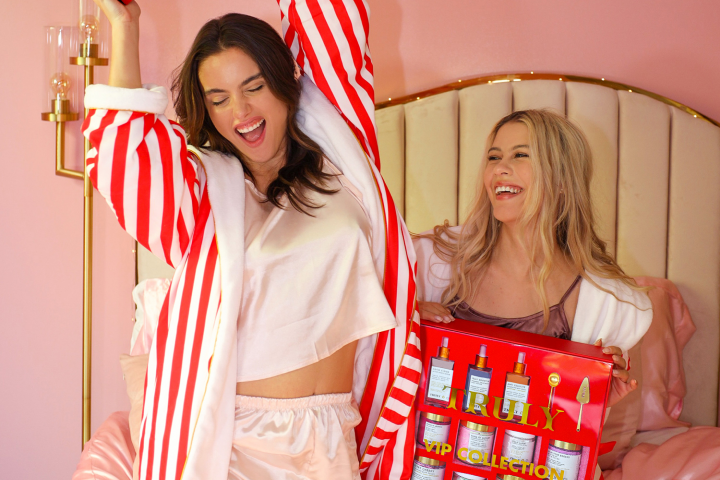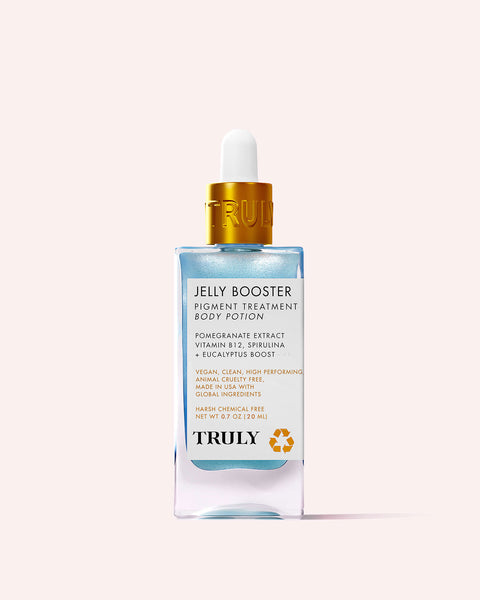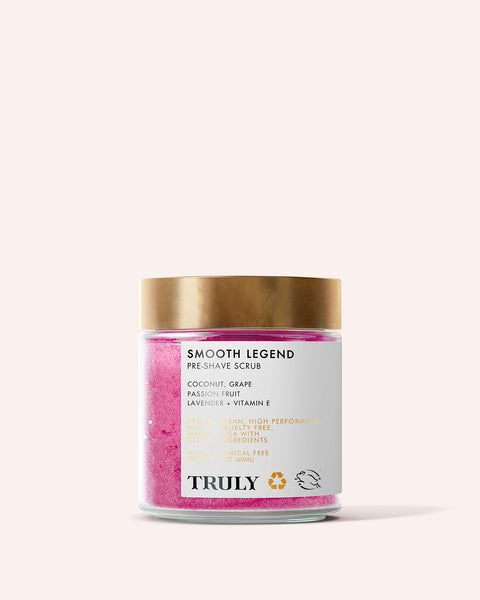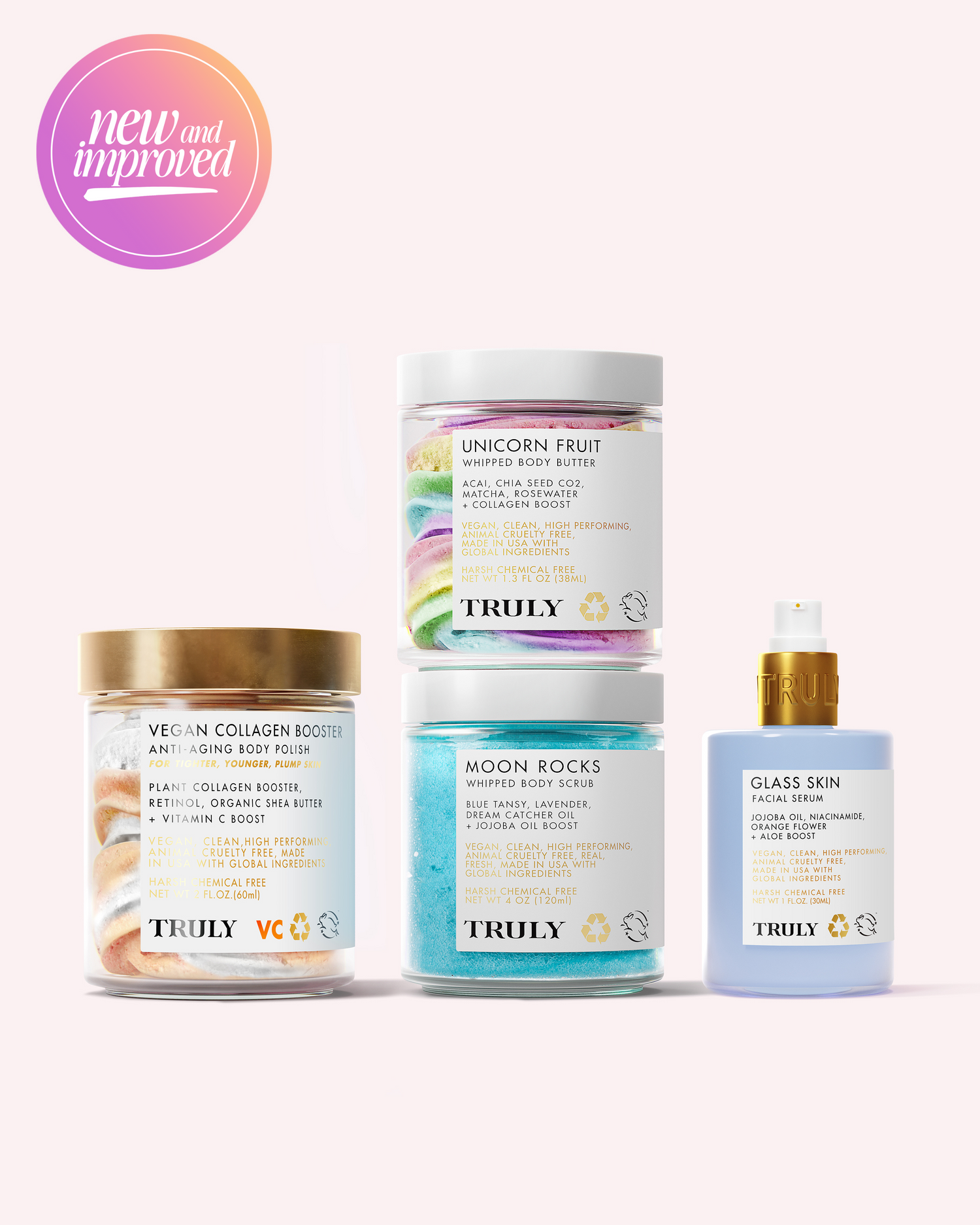Once Again, Those Blackheads On Your Nose Aren’t Blackheads
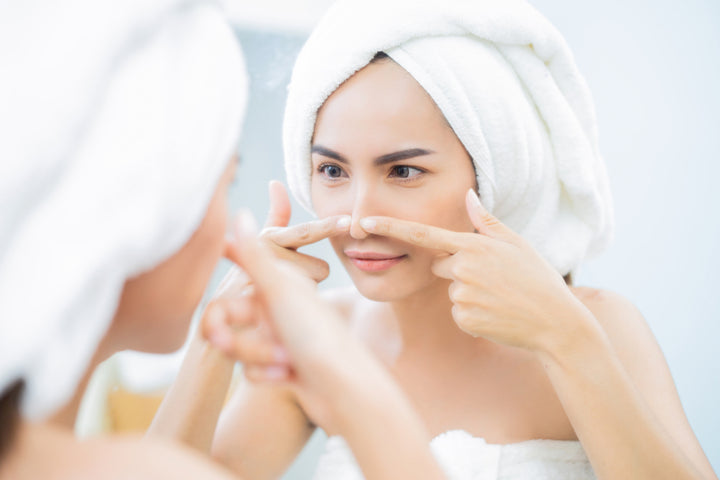
Blackheads are a bummer, but guess what? Those little bumps on your T-zone may not be blackheads at all. They could be keratosis pilaris.
Getting breakouts on your nose, chin, or basically anywhere on your body can be extremely frustrating. You've tried all the scrubs, pore strips, and face masks you can find and still, your skin suffers with these pesky gunk-filled bumps.
What can you do about it?
For starters, it's worth familiarizing yourself with what blackheads and KP actually are and identifying their key differences. Doing this will give you a guiding point from which you can create a targeted skincare routine to finally banish those blemishes.
Need some help navigating the world of blackheads and keratosis pilaris? That's what we're here for!
WHAT IS KERATOSIS PILARIS?
Keratosis Pilaris (KP) is a common skin condition that affects around 40% of adults. Usually it manifests as small, hard bumps surrounded by red patches that appear on the arms, legs, buttocks, and sometimes even the face.
Essentially, KP is a blockage of the hair follicles. This happens when the follicles become clogged with a buildup of keratin, a protein found in skin, nails, and hair.
According to New York City dermatologist Rachel Nazarian of Schweiger Dermatology, "The plug can also trigger inflammation in the skin, which is what causes the redness around each hair follicle."
HOW TO DIFFERENTIATE BETWEEN A BLACKHEAD AND KERATOSIS PILARIS
For starters, blackheads and KP look different. Blackheads actually take on a dark appearance, appearing as little dark dots, while KP appears as small, hard bumps surrounded by reddish skin.
They're also both caused by different things.
Acne vulgaris and its variations like blackheads, whiteheads, and pimples are caused by a buildup of dead skin cells and oil, which caused breakouts to occur.
Unlike KP, acne worsens in the summer months because excess oil production and heat create an ideal environment for bacteria, clogging the pores and resulting in blemishes.
If you think you have blackheads, the most effective treatment is a topical AHA, like glycolic acid, lactic acid, or BHA like salicylic acid. Retinoids also work well to get rid of blackheads, as these vitamin A derivatives stimulate cell turnover, exfoliating the skin and clarifying clogged pores. Benzoyl peroxide is another great over-the-counter treatment for clearing out impurities. However, it is not advisable for sensitive skin types as it's simply too harsh.
If you think you have keratosis pilaris, read on to find out how you can best treat it.
HOW TO ALLEVIATE KP
Protect Your Skin From Sunlight
Invest in a quality sunscreen with an SPF of at least 30 to shield your skin from harmful UV rays that dry out the skin, cause damage, and worsen KP symptoms.
If you've got acne-prone skin, look for an oil-free sunscreen that contains zinc as this is best for preventing pimples.
FOLLOW A KP SKINCARE ROUTINE
Certain skincare products can treat keratosis pilaris and make symptoms look less visible. Truly's KP Treatment Kit offers everything you need to control keratosis pilaris quickly and easily. The kit includes:
A Soothing Scrub
Using a gentle exfoliant can dislodge keratin plugs and dissolve excess sebum, preventing clogged follicles from occurring in the first place. Avoid rough exfoliation or scrubbing as this can cause skin irritation and worsen the appearance of KP.
Truly's Moon Rocks Scrub uses a base of sugar with a blend of blue tansy, lavender, and jojoba oil for a soothing, hydrating exfoliation.
A Retinol Serum
Retinol speeds cell turnover and unclogs pores, making it the perfect choice for handling KP. Apply a few drops every night to affected areas.
"Retinol-based products smooth the skin by gently exfoliating to remove dead skin cells and imperfections," says Jessica Weiser of the New York Dermatology Group, in New York City.
Truly's Purple Rain Glow Serum is formulated with retinol and glycolic acid to gently exfoliate away clogging and keep skin clear and even.
A Moisturizing Body Butter
KP affects gets worse when you have dry skin. That's why you need to replenish moisture in your skin if you want to alleviate KP. Try using a lightweight moisturizer if you have acne-prone skin or a nourishing body butter if you have normal skin.
"Look for ingredients like ceramides, shea butter, petrolatum, dimethicone, glycerin, and hyaluronic acid," says dermatologist Blair Murphy-Rose.
Truly's Unicorn Fruit Whipped Body Butter depends on its combination of shea butter, acai, rosewater, and collagen to replenish lost moisture, exfoliate dead skin cells, and repair damaged skin.
A Retexturizing Face Mask
Renew your skin as you sleep by applying a retinol and vitamin C-formulated face mask. Retinol speeds up cell turnover and help skin shed faster, making it more difficult for keratin plugs to form and clog the pores.
Vitamin C plays an important role in collagen production. When vitamin C levels are too low, KP can quickly develop.
Truly's Starface Jelly Sleep Mask is made with retinol, vitamin C, glycolic acid, and passion fruit to plump, resurface, and renew your complexion. For best results, wear it overnight so it can actively the surface of the skin and beneath to target KP.
Opt for a Chemical Peel
Chemical peels performed in-office monthly or bi-weekly can offer more dramatic results. That's because they use high levels of alpha and beta hydroxy acids to dissolve dead skin cells and unplug follicles.
See a board-certified dermatologist for evaluation and a customized KP treatment plan, including topical therapies and in-office chemical peels that can help improve the rough texture and discoloration from KP.
It's easy to confuse blackheads with keratosis pilaris. They're both little bumps that can appear practically everywhere. However, as you've seen in this article, there are key differences between the two which are worth looking out for.
If you're still unsure whether or not they're blackheads or something else, book an appointment with a dermatologist for clarification and treatment options.
In the meantime, good luck with your new KP routine. We hope you'll be bump-free asap!

